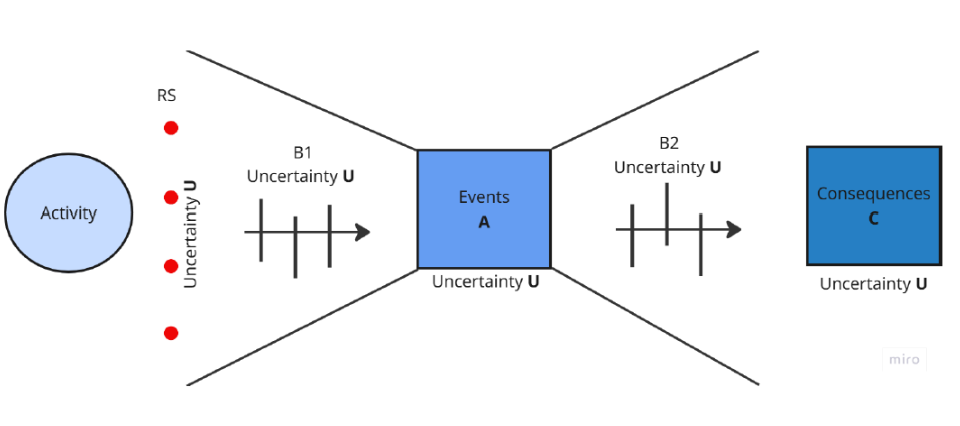by Rebekka Schmidt & Rune Undheim
How can ideas and principles from risk science be applied to improve the understanding and handling of uncertainty in barrier management, to strengthen current practices?
Barrier management is the main topic of this master thesis, and it will explore how monitoring is used in such a context. Two large drilling companies and Presight’s Barrier Management software (BM) were used as the empirical subjects. Our goal was to understand how the tool supports barrier management in the industry, and to uncover the opportunities for improvement.

Figure 1 A simplified overview of BM. Visit Barrier Management – Presight Solutions AS for more information
Presight Barrier Management provides an overview of barrier elements, their status, and their role in managing risk. While a simplified overview is shown in the figure above, more details can be found here:
Key findings from the thesis:
The three main findings of the thesis on current practice were:
- Limited traceability from risk assessment to barrier management.
- Static approach to barrier management.
- Limitations for the assessment of barrier performance.
Limited Traceability from Risk Assessment to Barrier Management
A large void between risk assessment and barrier management was discovered through this work. Traces of safety studies were found where bowties, associated barrier elements, events and consequences had been created. These studies were carried out in workshops with third-party safety consultants. However, much of that knowledge was not carried forward into the system. While they form a foundation for barrier management in operation, there is little reference back to the studies and the insights they provided. This traceability in the knowledge base behind operational barrier management means decisions often rely on outdated assumptions, ignoring uncertainty and knowledge gaps. Barrier management tends to evolve independently of risk management, resulting in a lack of integration between the two disciplines.

Figure 2 How barrier management is treated separately from risk management
Static Barrier Management
The monitoring of barrier elements in Presight’s software relies on fixed thresholds on whether the barrier element is “functioning” or not. This is based upon predefined assumptions. Due to current practice, there is a disconnect between risk assessment and barrier management as the monitoring of barrier elements often uses data based on outdated assumptions. As a result, the monitoring system will present a simplified and potentially misleading picture of the actual risk at hand, and the barrier status might give a false sense of safety.
Assessment of Barrier Performance
Barrier performance is assessed using categories like reliability, functionality, vulnerability, integrity, and survivability. In practice, these assessments are not based on tests that simulate real-world events. Current systems rely on assumed predictability and often overlook the strength of the underlying knowledge. The issue could be rooted in the core of barrier management, where it becomes disconnected from risk science, and where barrier performance is not thought of as presented in the figure below.

Figure 3 Uncertainty associated with components of consequence
Recommendations
Lastly, recommendations were shared with actors involved in barrier management.
- Link risk to barrier management. Ensure that barrier strategies are directly linked to risk assessment throughout all lifecycle phases. This should include clearly identifying the specified consequences C’ the barriers are meant to influence, along with the associated measures of uncertainty Q and the underlying knowledge base K.
- Emphasise robustness. Ensure that the ability of barriers elements and their performance are measured to test its survivability with degraded equipment under varying conditions.
- Avoid oversimplified visualisations. Visual elements such as colour codes should be used with caution and should always be supplemented with a knowledge base supporting the validation of the visualisation elements.
- Document and follow up on assumptions. Assumptions that form the basis for the justification of barrier elements are crucial to the functioning of them. Dynamic factors such as changes in operations, external conditions, or observed deviations should be able to trigger a review, and if needed, a revision of these assumptions.
Conclusion
While barrier management practices in the Norwegian offshore sector have become more digitalised and systematised, they still face significant limitations in handling uncertainty. Current practices often treat barriers as static compliance elements rather than dynamic risk controls, focusing on their present status rather than their future performance under varying conditions.

